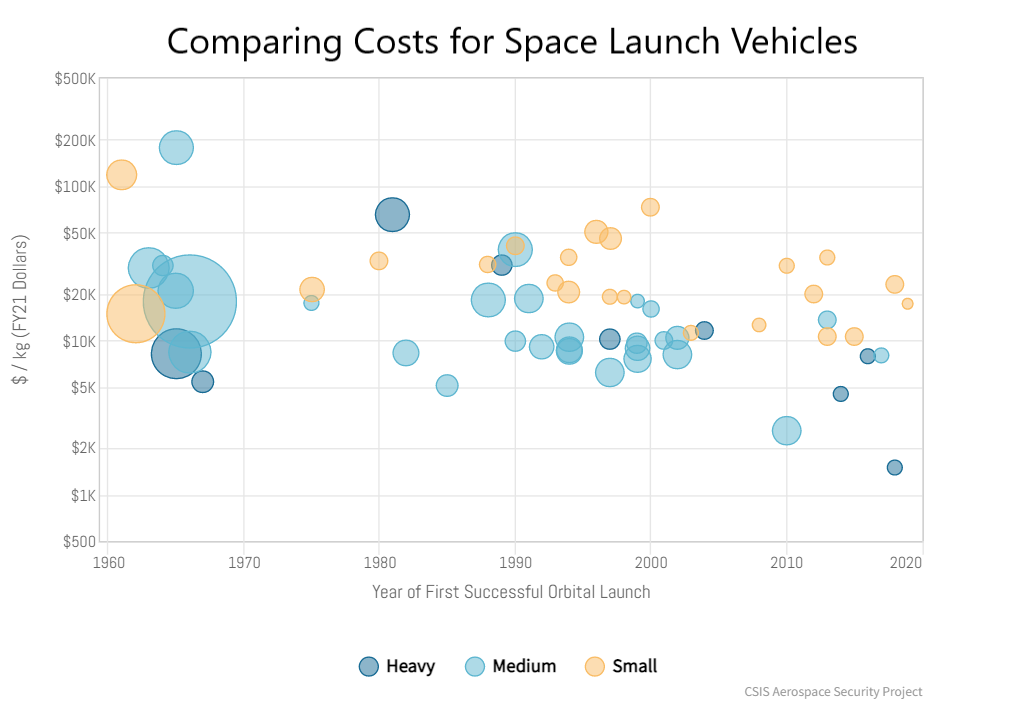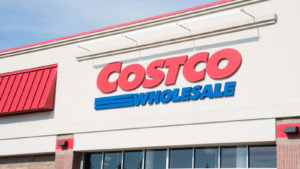Although any time is a good time to consider the best retirement stocks to buy, the present juncture sparks perhaps unprecedented urgency. With the implosion of SVB Financial Group, the ripple effect might not just center on one troubled enterprise. Rather, it’s quite possible that over the next several weeks and months, anxieties can impact multiple sectors, particularly risk-on assets.
According to CNN Business, SVB Financial suffered a bank run due to a confluence of myriad headwinds. Fundamentally, the Federal Reserve spiked the benchmark interest rate, causing the money supply to tighten. As well, SVB held unrealized losses as the rising rates reduced the value of its bond portfolio. Then, venture capital dried up, forcing many technology startups to draw down funds held by SVB.
Like it or not, investors seeking the best retirement stocks may have to tack on greater risk. At the time of writing, the U.S. 10-year Treasury Yield stands at 3.7%. Therefore, passive-income-generating equities need to yield at least that and offer some upside potential. It’s a tough ask to be sure. However, daring retirees may want to consider these best retirement stocks (under present circumstances).
| CVX | Chevron | $160.76 |
| EPSN | Epsilon Energy | $5.25 |
| SQM | Sociedad Química y Minera | $78.85 |
| PDCO | Patterson Companies | $25.94 |
| TAIT | Taitron Components | $3.64 |
| CIX | CI Financial | $13.89 |
| PKG | Packaging Corp of America | $131.35 |
Chevron (CVX)

At first glance, oil and natural gas giant Chevron (NYSE:CVX) might seem a risky idea for the best retirement stocks for anxious investors. After all, the broader political and ideological winds point heavily toward clean and renewable energy solutions. Unfortunately, renewables like wind and solar tend to be intermittent, only working when the sun is up or the wind is blowing. On the other hand, oil consistently generates power irrespective of outside forces (within reason).
Financially as well, Chevron makes for an enticing market idea. First, the balance sheet enjoys several positive attributes, such as an equity-to-asset ratio of 0.62 times (ranked better than 67% of the field). Operationally, Chevron features a three-year revenue growth rate of 18.1%, which pings above 75.62% of sector players. Also, its free cash flow (FCF) growth rate during the same period is 40.7%, outpacing almost 77% of the industry.
Further, its net margin is 15%, within the top third of the hydrocarbon sector. It also supports the company’s forward yield of 3.78%. Notably, Chevron commands 37 years of consecutive annual dividend increases. Lastly, Wall Street analysts peg CVX as a moderate buy, assigning it a $190.15 price target. This implies 19% upside potential.
Epsilon Energy (EPSN)

A lesser-known energy firm, investors will do well to familiarize themselves with Epsilon Energy (NASDAQ:EPSN). An on-shore focused independent oil and natural gas company engaged in the acquisition, development, gathering, and production of oil and gas reserves, Epsilon may be a bargain due to its forward relevancies. Still, it will require patience. Since the Jan. opener, EPSN gave up over 16% of its equity value.
However, the underlying financials may be too attractive for market participants to ignore. For one thing, Epsilon enjoys excellent stability in the balance sheet. Most conspicuously, it carries zero debt, giving it incredible flexibility during these difficult times. Operationally, the hydrocarbon specialist features a three-year revenue growth rate of 18.1%, above 75.62% of sector players.
In addition, the company’s net margin stands at nearly 50%, outpacing over 92% of the field. Such robust profitability helps Epsilon carry a forward yield of 4.67%. Also, its payout ratio sits at 40.32%, facilitating confidence regarding yield stability. Right now, nobody covers EPSN. However, given its undervalued nature – with a price-earnings ratio of less than 4 times – EPSN could fly substantially higher.
Sociedad Quimica y Minera (SQM)

A Chilean chemical company, Sociedad Quimica y Minera (NYSE:SQM) is the world’s biggest lithium producer. As the underlying commodity for lithium-ion batteries, lithium of course commands extraordinary relevance. Should the future of transportation be electric, then it will be vital for companies to secure lithium supply. As well, enterprises will need to find supplies from jurisdictionally friendly sources. SQM hits the nail on the head on both counts.
To be fair, investment resource Gurufocus.com warns that SQM may be a possible value trap. That said, the financials on paper look incredibly attractive. For instance, the company’s three-year revenue growth rate stands at 81.3%, blowing past the competition. Also, its book growth rate during the same period pings at 36.4%, again dominating the field.
On the bottom line, the mining firm features a trailing net margin of 36.39%. This helps undergird the company’s robust forward yield of 15.07%. Still, investors should be careful about its payout ratio, which flies up to 110.77%. For full disclosure, covering analysts peg SQM as a hold. That said, their average price target stands at $103, implying over 30% upside potential. Thus, it could be one of the best retirement stocks to buy.
Patterson Companies (PDCO)

A medical supplies conglomerate, Patterson Companies (NASDAQ:PDCO) primarily focuses on the business of veterinary and dental products. Fundamentally, neither arena will likely fall out of relevance anytime soon. Further, with millennials gravitating heavily toward pet ownership, the veterinary angle should be a long-term winner for PDCO, making it one of the best retirement stocks.
To be sure, Patterson doesn’t have as many attractive fiscal attributes as its competitors. However, it does enjoy a solid balance sheet. In particular, its Altman Z-Score comes in at just above 4, indicating low bankruptcy risk. Also, the market prices PDCO at a forward multiple of 11.27. As a discount to earnings, Patterson ranks better than 75% of the competition.
Looking at the bottom line, the company posts a trailing net margin of 3.08%, outpacing 61.45% of its peers. This helps bolster the company’s forward yield of 3.94%, which ranks much higher than the healthcare sector’s average yield of 1.58%. Finally, analysts peg PDCO as a consensus moderate buy. Also, their average price target stands at $31.79, implying over 20% upside potential.
Taitron Components (TAIT)

Based in Valencia, California, Taitron Components (NASDAQ:TAIT) is a national distributor of brand-name electronic components and supplier of originally designed and manufactured (ODM) electronic components. Granted, the broader electronics market presents significant risks. However, over the long run, the normalization of the global economy should make TAIT one of the best retirement stocks.
To be fair, Taitron will require some patience among market participants. However, it also wouldn’t be fair to classify TAIT as a purely speculative wager. For instance, the company benefits from a robust balance sheet. Most notably, it features no debt, again providing much flexibility during these troubles. Also, its Altman Z-Score pings at 14.37, indicating extremely low bankruptcy risk.
On the bottom line, Taitron posts a trailing net margin of nearly 40%, outpacing almost 99% of the industry. Naturally, this top-level figure bolsters the company’s forward yield of 5.38%. Conspicuously, this comes in much higher than the technology sector’s average yield of 1.37%. Lastly, no analysts cover TAIT. However, the market prices shares at a trailing multiple of 6.31, which is extremely low. Thus, TAIT could fly much higher from here.
CompX International (CIX)

Headquartered in Dallas, Texas, CompX International (NYSEAMERICAN:CIX) represents one of the lesser-known candidates for best retirement stocks. However, it plays a critical role in the background. According to its website, CompX is a diversified domestic manufacturer of engineered, quality components providing critical functionality to our customers’ products.
Financially, the company presents a unignorably compelling profile. To begin with, CompX enjoys excellent stability in the balance sheet, particularly because it suffers no debt. As well, its Altman Z-Score pings at 10.14, indicating an extremely low risk of bankruptcy. Operationally, CompX features a three-year revenue growth rate of 10.6%, above nearly 74% of the industry.
Notably, its net margin is 12.53%, outpacing almost 80% of its peers. In addition, this stat helps undergird CompX’s forward yield of 5.44%. That’s significantly higher than the industrial sector’s average yield of 2.36%. Currently, no analyst covers CIX. However, given its low price-earnings ratio of 10.87 (compared to the sector median of 16.63), CIX can certainly swing higher.
Packaging Corp of America (PKG)

Perhaps the riskiest idea among the best retirement stocks, Packaging Corp of America (NYSE:PKG) specializes in custom corrugated solutions. Per the company’s website, corrugated packages offer the most environmentally friendly form of packaging available. That helps in the environmental, social, and governance (ESG) department. Moreover, e-commerce may continue to rise in pertinence over the next several years.
Following a sharp dip from the pandemic highs, e-commerce sales as a percentage of total retail sales bounced conspicuously higher throughout 2022. Therefore, PKG might rise in relevance as e-commerce trudges forward despite the pressures of inflation. For full disclosure, analysts have a dim view of PKG, citing about a 5% downside risk. However, the upside of the e-commerce narrative could be the bigger catalyst.
Financially, Packaging doesn’t feature outstandingly remarkable stats but decent metrics. For instance, the company’s three-year revenue growth rate is 7.3%, above nearly 59% of the industry. Its main strengths lie in its profitability, though. For instance, its net margin stands above 12%, beating 89% of the competition. Finally, Packaging carries a forward yield of 3.78%. Further, its payout ratio sits at 54.15%, which should be a sustainable yield.
On the date of publication, Josh Enomoto did not have (either directly or indirectly) any positions in the securities mentioned in this article. The opinions expressed in this article are those of the writer, subject to the InvestorPlace.com Publishing Guidelines.



